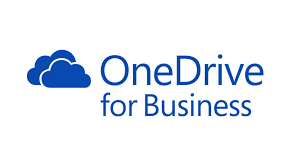The digital workplace has made effective file management and teamwork very essential for the success of the company. OneDrive for Business from Microsoft is a potent cloud storage and synchronization tool that revolutionizes teamwork, collaboration, and sharing.
Remember exchanging files via email, handling inconsistent document versions, or, even worse, losing important data as a result of technological malfunctions? Microsoft has a solution to these workplace issues in OneDrive for Business. It offers enterprise-level cloud storage as a part of the Microsoft 365 package, which easily connects with popular Office products and applications.
Share, Sync, Succeed with OneDrive for Business Features
Powerful Storage Capability:
In general, each user gets cloud storage of 1TB, with the possibility of expansion based on organizational requirements. Teams can store, read, and share massive files without worrying about space constraints.
Security Protocols:
OneDrive for Business includes many security tiers. You can encrypt data while it’s in transit and at rest. Users get to use multiple-factor authentication with enhanced defense against threats. You get all this with adherence to essential industry standards. OneDrive for Business also provides frequent fixes and security updates.
Smooth Collaboration:
The platform is excellent at encouraging collaboration as it has the ability to co-author in real time, monitor version history, and share documents with adjustable permissions and cross-platform compatibility. In addition, it provides integration with Microsoft Teams and SharePoint.
Perceptive Elements:
Modern AI-powered capabilities increase productivity by suggesting files according to work habits, intelligent search capabilities, and automatic file organization. For scanned documents, you get optical character recognition and automatically transcribe audio and video files.
Impact on Business and Execution
Productivity Boost:
Generally, businesses report a boost in the productivity of workflow when they employ OneDrive for Business. Wasting time scanning for files is less, and the teams concentrate more on doing the valuable work. The availability of your data from any device supports a remote work arrangement, ensuring continuity for your company.
Cost Benefits:
OneDrive for Business’s cloud-based architecture prevents a number of conventional IT expenses. For instance, it decreases the danger of data loss and lowers maintenance and backup costs, reducing the requirement for local storage equipment. Also, it has subscription-based pricing.
Effects on the Environment:
Cloud storage solutions like OneDrive for Business provide environmental sustainability by reducing the need for physical storage hardware, decreasing energy consumption, minimizing paper usage by digitalization, and supporting remote work, which also reduces commuting emissions.
Best Practices for Implementation
Planning Phase:
You can assess current storage requirements and usage patterns. It defines clear governance policies and plans folder structures and naming conventions. You can also identify key stakeholders and champions.
Deployment Strategy:
Users can begin with a pilot group that provides complete training. You can have clear communication channels, monitor adoption rates, and address concerns promptly.
Ongoing Management:
Ongoing management provides regular security audits, usage monitoring, and optimization. You get continuous user education with regular policy reviews and updates.
Future Vision:
OneDrive for Business provides better integration by using AI and machine learning facilities. Microsoft continues to present improvements on the platform, such as features demanded by user needs, automation of routine work, and security enhancements.
In conclusion,
OneDrive for Business provides more than just cloud storage. It’s a complete solution for modern workplace collaboration and file management. As more and more businesses embrace digitalization, platforms like OneDrive for Business become more central to operation success.
The key to maximizing the platform’s potential is to maintain proper implementation, ongoing management, and user adoption. Organizations can, therefore, produce more efficient, secure, and collaborative environments following best practices and the full set of features offered by the platform.
It has the abilities and features to support smaller business needs to make functions streamlined and easy, as well as large enterprises focused on enhancing cooperation and facilitating collaborations based on global terms. The more we get into the digital age, the more the platform continues its evolution to make sure that it remains at the forefront of business productivity solutions.
